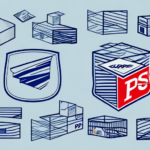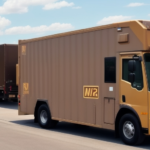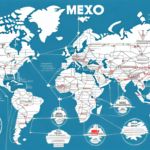Understanding Expedited Shipping
Expedited shipping is a crucial service for businesses and consumers requiring swift delivery of packages. Whether it's for urgent business documents, perishable goods, or time-sensitive personal items, expedited shipping ensures that packages arrive faster than standard shipping options. In this article, we delve into the intricacies of expedited shipping, examining its definition, comparing it with standard shipping, exploring the factors influencing delivery times, and providing actionable tips for both businesses and consumers to optimize their shipping strategies.
What is Expedited Shipping?
Expedited shipping refers to a delivery service that guarantees faster transit times compared to standard shipping methods. While standard shipping typically ranges from 3 to 10 business days, expedited shipping options can deliver packages within 1 to 3 business days, and in some cases, even offer same-day delivery for an additional fee.
This shipping method is ideal for:
- Urgent business documents
- Perishable goods like food and pharmaceuticals
- Time-sensitive personal items
- E-commerce orders that require quick delivery to enhance customer satisfaction
However, expedited shipping comes at a premium cost, which varies based on package weight, dimensions, destination, and the carrier selected.
Comparing Expedited and Standard Shipping
The primary distinction between expedited and standard shipping lies in the delivery speed. Expedited shipping offers a quicker delivery window, making it suitable for urgent shipments, whereas standard shipping is more cost-effective for non-urgent deliveries.
Key Differences
- Delivery Time: Expedited shipping guarantees faster delivery, often within 1-3 days, compared to 3-10 days for standard shipping.
- Cost: Expedited shipping is generally more expensive due to the speed of delivery.
- Tracking and Monitoring: Expedited services typically offer more detailed tracking information, allowing for real-time monitoring of the shipment's progress.
- Availability: Expedited shipping may not be available to all destinations, especially remote or international locations.
According to the Environmental Protection Agency (EPA), faster shipping methods like expedited shipping can have a higher environmental impact due to increased fuel consumption and emissions from faster transportation methods.
Choosing the Right Carrier for Expedited Shipping
Selecting an appropriate carrier is vital to ensure timely and reliable expedited shipping. Major carriers offering expedited services include:
- UPS: Offers services like Next Day Air, 2nd Day Air, and 3 Day Select.
- FedEx: Provides options such as FedEx Priority Overnight, FedEx Standard Overnight, and FedEx 2Day.
- USPS: Offers Priority Mail Express.
- DHL: Provides international expedited shipping services through DHL Express.
When selecting a carrier, consider factors such as delivery speed, cost, reliability, and the carrier's coverage area.
Factors Influencing Expedited Shipping Delivery Times
Several elements can impact the delivery timeline of expedited shipments:
- Carrier Policies: Each carrier has specific guidelines and operational procedures that can affect delivery times.
- Package Specifications: The weight, dimensions, and nature of the package (e.g., hazardous materials) can influence shipping speed.
- Destination: Proximity to delivery hubs and geographical challenges can affect transit times.
- Weather Conditions: Adverse weather can lead to delays, even with expedited shipping.
- Time of Shipment: Packages shipped later in the day may not be processed until the next business day.
Understanding these factors can help in planning and mitigating potential delays in expedited shipping.
The Costs of Expedited Shipping: What to Expect
Expedited shipping typically incurs higher costs compared to standard shipping. The price is influenced by:
- Package Weight and Dimensions: Heavier and larger packages cost more to ship.
- Destination: Longer distances and international destinations increase shipping costs.
- Carrier Rates: Different carriers have varying pricing structures for expedited services.
For instance, shipping a 5-pound package domestically via UPS Next Day Air may cost approximately $30-$50, whereas standard ground shipping might cost around $10-$20.
Businesses must weigh the benefits of faster delivery against the increased costs to determine the most cost-effective shipping strategy.
Benefits and Drawbacks of Expedited Shipping Services
Expedited shipping offers several advantages, best suited for specific needs:
- Fast Delivery: Ensures urgent packages arrive promptly.
- Enhanced Customer Satisfaction: Quick delivery can improve customer experience and loyalty.
- Real-Time Tracking: Detailed tracking allows for better visibility and management of shipments.
However, there are also notable drawbacks:
- Higher Costs: The premium price may not be feasible for all budgets.
- Environmental Impact: Faster shipping methods often result in higher carbon emissions.
- Limited Availability: Not all destinations or package types are eligible for expedited services.
Businesses must balance the benefits against the drawbacks to determine the appropriate use of expedited shipping.
Best Practices for Optimizing Expedited Shipping
Selecting the Right Carrier
Conduct thorough research to compare carriers based on delivery speed, reliability, cost, and customer service. Reading reviews and testimonials can provide insights into a carrier's performance.
Tracking Your Shipment
Utilize the tracking tools provided by carriers to monitor the progress of your shipment. Real-time tracking helps in anticipating delivery times and managing any unforeseen delays.
Ensuring Safe Delivery
Proper packaging is essential to protect items during transit. Use sturdy packaging materials and consider purchasing shipping insurance for valuable or fragile items. Additionally, verifying the correct shipping address minimizes the risk of delivery issues.
Managing Customer Expectations
Clearly communicate the expected delivery times and costs associated with expedited shipping to customers. Providing tracking information and timely updates can enhance transparency and trust.
Handling Issues: Refunds and Customer Expectations
Despite best efforts, issues such as late or damaged shipments can occur. In such cases:
- Contact the Carrier: Reach out to the carrier's customer service with pertinent information like the tracking number and details of the issue.
- Documentation: Provide photos or evidence of any damage to support refund or replacement claims.
- Follow Procedures: Adhere to the carrier’s specific processes for filing claims to expedite resolution.
Proactively managing these issues helps maintain customer satisfaction and trust.
Conclusion
Expedited shipping is a valuable option for those needing swift delivery of packages. By understanding its nuances, comparing it with standard shipping, selecting the right carrier, and implementing best practices, both businesses and consumers can effectively utilize expedited shipping to meet their needs. Balancing speed, cost, and reliability ensures that shipments are delivered efficiently, enhancing overall satisfaction and operational success.






















